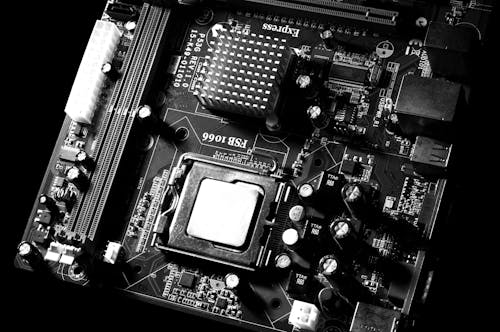What is a shunt? A shunt is defined as a high accuracy resistor that can be used to measure current flow in a circuit. By using Ohm’s law we know that the voltage dropped across the resistor is divided by the resistance of that Resistor equal to the current, so if we measure the voltage across the shunt resistor in the circuit, current can be easily calculated.

What is shunt resistance?
When a resistor is connected in parallel with another resistor having low value of resistance, such type of resistor is called shunt resistance. The shunt resistor comprises of the material having the low-temperature coefficient of resistance.
Uses of Shunt Resistance
Following are the some uses of shunt resistance :
- By connecting shunt resistance to ammeter, its measuring range can be extended.

Consider an ammeter has its resistance represented by (Rm) and it measured only a small current represented by (Im). A shunt resistor represented by (Rs) is placed in parallel with the ammeter for extending their range.
Let, Rs = Shunt resistance
Is = Shunt current
I = total load or circuit current to be measured
![]()
Since shunt is in parallel with ammeter,
![]()
From above equation we get,
![]()

Where N is the ratio of the total current (I) which is to be measured to the full-scale deflection current Im is known as the multiplying power of the shunt.
2.The galvanometer used the shunt for measuring the large current. Shunt is connected in parallel to the circuit of the galvanometer. The current sensing devices is known as galvanometer. The pointer of the galvanometer determined the direction of flow of current inside the circuit.
3. It allows electric current to pass around another point in the circuit by creating a low resistance path, therefore it also acts as a path diverter.
Electrical Shunts in Circuits
There are various ways to measure the flow of electricity in a circuit. However, the most common method is to make an indirect measure, which indicates the level of electrical power beyond the precise solution in the direction of Ohm’s law. The resulting voltage drop will be directly related to the current passing through the circuit. Proper identification of this decrease in voltage will enable you to measure the magnitude of the current flow.
A high level of care should be taken in the placement of the shunt within the circuit. It is common to place the shunt as close to the ground as possible when there is a shared ground between the circuit and the measuring device. This allows the protection of the ammeter to the common mode voltage, which may cause damage and misleading results. You will need to separate the shunt from the ground or incorporate a protective voltage divider inside the undergrounded leg.
What Does a Shunt Do?
An electrical shunt is a device that causes the current to flow or diverge past a set point in the formation of a low resistance. Some meters feature in-built precision current shunts and allow measurements to be taken according to current DC and Watts. There is also an electrical plug that measures the current DC flow.
The Ohm law formula is used as follows:
V = I × R
This equation is specified in the voltage (V) across resistance (R in ohms) produced as a result of the current and circulating through the resistance. For example, a current shunt with a resistance of 0.002 ohms and a current of 30 Amps will result in a voltages of 0.002 x 30 = 0.06 or 60 mV (milliVolts).
You can assess the voltage drop across the shunt by connecting the current shunt within a circuit setup for measurement. The current shunt resistance assessment will allow the calculation of the current rate according to Ohm’s law calculation. Ohm’s law can also be applied to current shunt resistance measurements.
Common uses of shunt resistor include:
-
Measuring current circulation with battery and monitoring power generation.
-
High-frequency noise redirects (this requires a shunt containing capacitator) before the signal reaches the circuit element
-
Installation inside a DC connect enclosure that contains a negative conductor between the batteries and the inverter
-
Overload protection in control devices includes battery chargers and power supplies
DC Panel Ammeter Shunts
The DC ammeter shunt panel is one of the most widely used devices of this type. It allows accurate measurements of current values larger than those that can be measured with an ammeter only. This process involves diverting a small amount of current into the meter of measurement.
It is necessary to set the resistance level so that the corresponding decrease in strength is measured without disturbing the circuit. The current level has a direct effect on the flow rate in the shunt, resulting in the correct current level being identified.
How Does a Shunt Work?
There is a difference between the technical limitations of the shunt resistor and the standard Resistor. Shunt resistors allow high levels of accuracy, based on a small ohmic value. Kelvin’s connection is recommended to achieve such high clarity. This communication avoids issues such as lead resistance and sensitivity.
There are various types of reversible and irreversible materials that can have an impact on the value of the shunt resistor. The corresponding mechanical, electrical, and thermal loads mean that there is a long-term stability and irreversible change in resistance. The Temperature Coefficient of Resistance (TCR) is expressed at ppm / oC and corresponds to an increase from the cooling or temperature of the transistor due to fluctuations in local temperatures. The level of power that the resistor must eliminate is expressed in terms of Power Coefficient of Resistance (PCR) or ppm / W.
Electric shunts are commonly used to protect the speed controller from a load that pulls excess current or reduces the speed of the attached motor. It is possible to increase the speed of the controller by disconnecting the shunt from the sense line. The sense line will need to be connected to the ground. There will be no voltage drop, so the speed controller will produce as much power as possible. However, this can be dangerous if the load placed on the control transistors is too high.
The current high accuracy can be used in bench testing of an equipment. This type of current shunt can be used in conjunction with a voltmeter to check the current level flowing through a circuit. The use of a sensitive voltmeter would mean that there is a better level of safety guaranteed in the measurement of larger currents than can be obtained with a standard multimeter.
How to Wire a Shunt?
Firstly, follow any instructions provided by the manufacturer. It will be necessary to ensure that the ammeter and shunt are capable of handling the same mV levels. After that you have to attach the shunt to the negative cable connecting the battery bank to the electrical circuit. This can be detected by following the negative lead from the battery to the circuit or fuse box.
If you want to measure current usage with a connected device and be given an alternator, you will need to adjust the negative connection of the battery to the corresponding side of the battery and shunt. The appropriate thick wire should be connected to the other side of the shunt, which leads to the negative battery circuit.
You will need to mount the shunt in place without the risk of cable shortages. Negative cables can be cut through a process to make installation easier. It will also be necessary to cut the appropriate hole of the ammeter installation panel. The hole will need to be tightened sufficiently to securely connect the meter. The connection between the lead and the current DC or voltage should be properly connected to the plus and minus pins. You will also need to make sure the meter is properly set (the current can be measured in AC, DC, ohms etc).
The wiring process should start with a basic check to ensure that the shunt is in series and load. You will also need to wire an appropriate battery pack and make sure it is connected to the correct side of the shunt. The wiring should feed from the shunt to the load. There should be no contact between the ammeter and the ground. However, the ammeter must be wired in parallel with the shunt, with the shunt being in series with the load.
Current or voltage measurement should start with circuit power. You can continue reading the meter. However, you should not change the power when measuring the resistance level.
How to Calculate Current Using a Shunt?
The current level should be calculated as follows:
Step 1: Write down Ohm’s Law
You should start by writing the Ohm equation of V = I * R, where V specifies the voltage drop across the shunt solution, I am the flowing electricity, and R being the shunt resistance.
Step 2: Substitute the Voltage and Current
Change the voltage (V) and current (I) values in the equation. For example, if the voltage across the shunt is equal to 10 then the current flow rate will be 1 ampere, and the equation will be 10 = 100 * R.
Step 3: Complete the working of Ohm
Divide the total equation of Ohm’s law by 100 to calculate the value of R. The R value in this case will be 0.1 ohm, corresponding to the shunt resistance value.

Frequently Asked Questions
Following are the frequently asked questions related to this article
1. What are two uses of shunt?
A resistor with a very low resistance value connected parallel with other resistors is caused shunt. Two uses of shunt:
i. The ammeter reading range can be extended by connecting the shunt resistance to it.
ii. The shunt is used on a galvanometer to measure a large current.
2. What is a shunt in respiratory?
Shunt is defined as persistent hypoxemia despite 100% oxygen inhalation. The deoxygenated blood (mixed venous blood) passes through the ventilated alveoli and mixes with oxygenated blood flowing through the ventricular alveoli, resulting in a reduction in blood content.
3. What are the side effects of a shunt?
Some of the most common risks of CSF shunt include infection, shunt malfunction, and improper drainage. Infections from the shunt can produce symptoms such as low-grade fever, soreness in the neck or shoulder muscles, and redness or tenderness along the shunt tract.
Conclusion
The shunt is a device that makes way for low-voltage resistance, allowing it to pass through another point in the region. The root of the word is in the verb ‘to shunt’ which means to turn away or follow a different path.
The shunt resistance is made mainly of a material with a low temperature resistance level.
The resistor shunts large portion of the current past meter movement. The movement of the meter measures the decrease in electrical energy in it equal to the current flow.